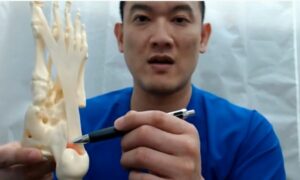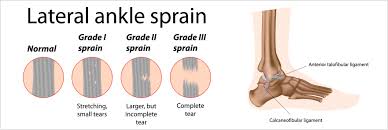Preventing and Treating Common Baseball Injuries
July 28 2022
With baseball season approaching, Dr. Lam discusses common baseball injuries and how to prevent and treat them.
After a 98-day lockout, MLB and the players association in unison stated – “Let’s Play Ball!” It’s difficult to believe but we’re only 3 weeks away from the start of baseball season.
If you’ve been practicing your homerun swing this offseason, you know it can take a lot out of you! Though it might not seem as dangerous as a contact sport like tackle football, if you’ve ever twisted your ankle diving for a ball or suffered a stress fracture rounding the bases, you know how your body can take a beating.
There are many common foot injuries associated with America’s pastime. Here at Family Foot & Leg Center, we’ve compiled some of the common ones, along with great ways to prevent them.
The most common injuries in baseball:
SPRAINS AND FRACTURES: quick sprints, slides, and pivots are a huge part of baseball. After you get a solid slug, you want to round the bases as quickly as possible to avoid getting tagged out. These herky-jerky movements can often lead to overstretching a tendon or ligament or fracturing a bone.
ACHILLES TENDINITIS: brief sprints followed by pauses repeatedly can shock your Achilles tendon and cause it to become inflamed.
PLANTAR FASCIITIS: catchers are in a squatting position for long stretches of a baseball game, often causing their arches to hurt. Heel spurs can also occur from prolonged plantar fasciitis.

INGROWN TOENAILS: tight cleats that squeeze your toes together can cause ingrown toenails.
Prevention is key for all sports injuries. To keep yourself in the game, follow these tips:
– Practice good warmup and cooldown techniques before and after playing
– Get the right gear and ensure your baseball cleats are a proper fit,
– Learn good running and sliding techniques and always keep them in practice.
– Rest when you need to and let your body recover between playing
– Stay hydrated
– Keep up with podiatry appointments, especially if you’re expecting pain or discomfort
TREATING ANKLE SPRAINS
Ankle sprains are among the most common injuries experienced by collegiate athletes. Ankle sprains come in many different varieties, including lateral and medial ligament complex sprains and distal tibiofibular joint sprains, also known as high ankle sprains. Researchers found that on average, it takes 13.9 days for high ankle sprains to recover in comparison to 8.1 and 10.7 days for lateral and medial ankle sprains respectively. The overall high ankle sprain rate was one out of 10,000 athlete exposures with 9.8 percent of high ankle sprain injuries being recurrent.
A widely utilized treatment protocol for ankle sprains consists of rest, ice, compression, and elevation (RICE), non-steroidal anti-inflammatory drugs (NSAIDs), a lower leg cast for at least four weeks (depending on the severity of injury), functional support such as ankle bracing or taping, exercise therapy and immobilization. Surgical intervention should be a last resort after one has exhausted conservative treatments.
This treatment approach has sparked debate when it comes to high-level athletes. Nonetheless, many studies have found that conservative treatment of ankle sprains provides similar outcomes in comparison to surgery, and that not all patients require surgical intervention. It is important to realize, though, the importance of how much time an athlete may need to miss when it comes to conservative versus surgical treatment. Most surgical repairs require at least three months of restriction from baseball while more conservative treatment could lead to a quicker return. However, the goals of surgical repair, in part, include less recurrence of injury.
TREATING ACHILLES TENDONITIS
Achilles tendon injury can be acute or chronic, ranging from tendinosis to ruptures. In baseball, the stop-start and quick cutting motions can create pain and tightness in the calf, causing injury over time. To reduce inflammation and irritation to the tendon, it is important the player rest and take time off from playing. This can be a challenge, especially with some high-level athletes. Time off for Achilles tendonitis can range from two weeks to two months. In our practice, we see that braces, dry needling, physical therapy and orthobiologics can speed recovery for some patients.
Icing can help decrease inflammation as well as cool down the soft tissues, causing a temporary restriction of blood flow to the tendon, and reducing swelling and pain. Ice therapy is best in approximately 10- to 15-minute spans. Wearing orthotics or heel pads can also help reduce tension on the tendon. Another important aspect of healing is strengthening exercises.
Home exercises can be helpful and may include the towel stretch, standing calf stretch, and soleus stretch, step-up, balance and reach exercises. If pain does not improve, one may need to consider physical therapy. Physical therapy protocol varies depending on the type of Achilles injury. In a single-bind randomized clinical trial, researchers found that conventional physical therapy consisting of gastrocnemius, soleus and hamstring stretches along with ice massage and the use of heel lifts and night splints with or without eccentric training is effective for treatment of insertional Achilles tendinopathy. NSAIDs and bracing may also reduce inflammation and pain with bracing also providing protection as well.
TREATING PLANTAR FASCIITIS
In terms of baseball, plantar fasciitis might affect base running or moving across the outfield. Treatment of plantar fasciitis may include medications such as NSAIDs, laser and extracorporeal shock wave therapy, stretching, orthotic devices and taping. Surgical options include fasciotomy, radiofrequency microtenotomy and alternative strategies such as platelet-rich plasma injection and stem cell therapy.
Meta-analyses and systemic reviews have determined that corticosteroids and orthotic devices are not only some of the most effective treatments for plantar fasciitis, but that the non-invasive nature of these modalities may afford athletes relief without missing significant playing time. Over-the-counter orthotics can be both clinically and cost-effective for the recreational athlete. In a study of patients with plantar heel pain, Ring and Otter found that for most of the patients studied, prefabricated semi-rigid insoles provided a short-term benefit equivalent to casted foot orthoses.
In our experience, however, we have found that prescription orthotics allow for creation of special characteristics that improve outcomes in this patient population. These modifications can include flanges and wedges to further stabilize the foot and ankle as well as accommodative padding and adaptions for the first metatarsophalangeal joint.
If you are suffering from any one of these foot issues, contact Dr. Lam’s office at (239) 430-3668 (FOOT) or NaplesPodiatrist.com to schedule an appointment.
—————–


 Fax: (239) 692-9436
Fax: (239) 692-9436 Tel: 239-430-3668
Tel: 239-430-3668
